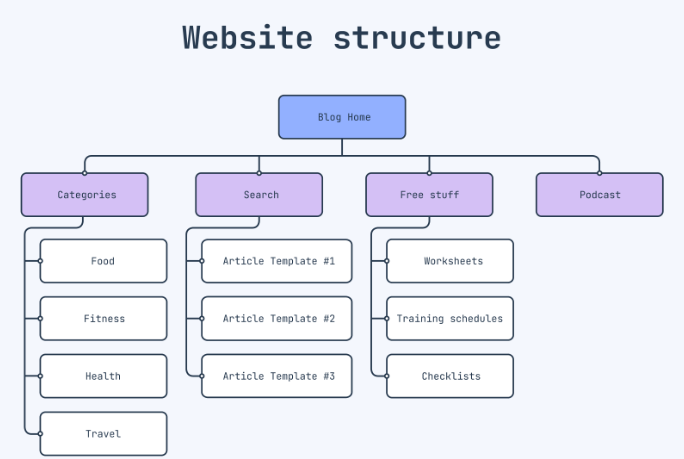What Is Multilingual SEO?

Multilingual SEO is the practice of optimizing a website for different languages to improve its search engine rankings in various countries or regions. It involves not only translating content but also adjusting it to fit the cultural preferences and search behaviors of each target audience.
This strategy ensures that a website appears in relevant search results for users in different languages, enhancing visibility and attracting more global traffic. By focusing on language-specific keywords and regional search habits, multilingual SEO helps businesses reach a wider audience and improve their online presence across multiple markets.
How to Do Multilingual SEO: A Step-by-Step Guide
This guide will take you through each step to make your website accessible and visible to users in multiple languages, helping you connect with a broader market. Here’s how to do it, step by step.
1. Research Your Target Languages and Markets
The first step in multilingual SEO is identifying which languages and markets you should target. You want to choose languages based on where your audience is located, as well as the demand for your products or services in those regions. Start by looking at your current website traffic to see where visitors are coming from. Use tools like Google Analytics to identify top countries and languages. You can also research which languages have a large online population or where your competitors are succeeding.
Next, understand the cultural and market differences that may affect how people search for products or services. For example, a product name may need to be localized or even renamed to better fit the cultural context. This research will guide your decisions about which languages to focus on and how to approach localization.
2. Choose Your Website Structure

Once you’ve decided which languages to target, you need to structure your website to handle multiple languages. There are several ways to do this, and the choice depends on your business needs and resources. The most common options are:
-
Subdirectories (e.g., example.com/en/ or example.com/fr/): This structure keeps everything under one domain, making it easier to manage and share link equity.
-
Subdomains (e.g., en.example.com or fr.example.com): A subdomain is treated as a separate site, so it requires more effort to manage, but it can be useful for larger websites with distinct regional markets.
-
Country-code Top-Level Domains (ccTLDs) (e.g., example.co.uk or example.fr): This is ideal if you’re targeting specific countries and want to build a strong local presence, but it requires managing multiple domains.
3. Implement Hreflang Tags
Hreflang tags are essential for multilingual SEO because they help search engines understand which version of your page to show to users based on their language or region. Without these tags, search engines may not know which content is relevant for users in different locations, leading to poor rankings.
To implement hreflang tags, you’ll need to add them to the HTML of your pages. For example, if you have an English version of a page and a Spanish version, the hreflang tag for the English page might look like this:
<link rel=”alternate” href=”https://www.example.com/en/” hreflang=”en” />
And for the Spanish page:
<link rel=”alternate” href=”https://www.example.com/es/” hreflang=”es” />
Make sure to include the appropriate language and regional codes (e.g., “en-us” for U.S. English or “es-es” for Spain Spanish). This tells Google and other search engines which page to show based on the user’s language or region.
4. Localize Your Content

Even if you use the content seeding strategy, you still need to localize it to ensure it resonates with users in different cultures. Localization involves adapting your content to fit the language, cultural nuances, and local preferences of each market.
Start by hiring professional translators who are familiar with the region’s culture and local expressions. Avoid using machine translation services like Google Translate for the final content, as these can often lead to awkward or inaccurate translations. Besides text, localization also involves adjusting images, currencies, date formats, and other elements to make the experience feel native to the user.
You should also take time to adapt SEO keywords for each language. People search differently based on their language and location, so the keywords that work in one language might not be effective in another. Use tools like Google Keyword Planner or SEMrush to research keywords in each target language and ensure your content is optimized for local search trends.
5. Optimize Your On-Page SEO for Each Language
On-page SEO is crucial for making sure your multilingual website ranks well in search engines. For each language version of your site, optimize the following:
-
Title tags and meta descriptions: These should be unique and tailored to each language. Ensure they include local keywords and are appealing to the local audience.
-
Headings (H1, H2, etc.): Use headings to structure your content clearly, and include relevant keywords in your language.
-
Image alt texts: Include descriptive alt texts in the target language, as search engines also use these for indexing images.
-
Internal linking: Make sure to link between pages within the same language version of your site, as well as across different language versions, where relevant.
6. Focus on Building Backlinks for Each Language Version
Building backlinks is a crucial part of SEO, and it’s no different for multilingual websites. Backlinks from high-quality, relevant websites signal to search engines that your content is authoritative and valuable.
For multilingual SEO, make sure to build backlinks from websites in the target country or language. This will help boost your site’s credibility in that specific market. Reach out to local bloggers, influencers, and media outlets to gain backlinks in each language.
Multilingual SEO Services: Do You Need One?
If you’re planning to expand your website to reach international audiences, multilingual SEO services can make all the difference between getting lost in translation or truly connecting with global customers. While translating content is a good start, multilingual SEO goes deeper — it’s about optimizing every part of your website (from keywords to metadata) for different languages and regions.
So, do you really need a multilingual SEO service?
Yes, if:
-
You want to appear in local search results in multiple countries
-
Your website traffic comes from users speaking different languages
-
You’re not sure how to structure your website URLs, hreflang tags, or metadata for each language
-
You want to avoid common pitfalls like duplicate content or automatic translations that harm SEO
Working with a multilingual SEO expert means you get more than just technical help – you gain a strategic partner who understands search intent, cultural nuance, and how to adapt your SEO strategy for global success. They’ll guide you through localization, keyword research, and technical optimization tailored to each market.
FAQs
-
What is multilingual SEO and why is it important?
Multilingual SEO involves optimizing your website for search engines in multiple languages to reach a broader, global audience and improve organic traffic.
-
How do I choose which languages to target for multilingual SEO?
Choose languages based on where your target audience lives and the demand for your products. You can also analyze your website’s current traffic to decide which languages will bring the most benefit.
-
What are hreflang tags and how do they help with multilingual SEO?
Hreflang tags are HTML attributes that tell search engines which language and regional version of a page to show to users based on their location or language preference.
-
Should I use different domains or subdomains for each language?
It’s helpful to use separate domains, subdomains, or subdirectories for each language to better organize your content. This structure makes it easier for search engines to index and rank your site correctly for each audience.
-
How can I ensure content quality across different languages in multilingual SEO?
Hire professional translators or native speakers to ensure content is accurately translated and culturally relevant, avoiding machine translations that may lead to poor user experience and SEO performance.
Conclusion
In conclusion, multilingual SEO is essential for expanding your website’s reach to a global audience. It improves visibility and user experience through proper language targeting and high-quality translations.

